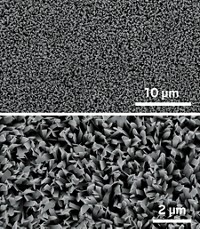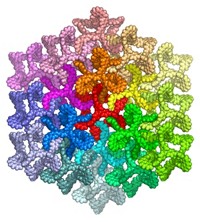Advertisement
Grab your lab coat. Let's get started
Welcome!
Welcome!
Create an account below to get 6 C&EN articles per month, receive newsletters and more - all free.
It seems this is your first time logging in online. Please enter the following information to continue.
As an ACS member you automatically get access to this site. All we need is few more details to create your reading experience.
Not you? Sign in with a different account.
Not you? Sign in with a different account.
ERROR 1
ERROR 1
ERROR 2
ERROR 2
ERROR 2
ERROR 2
ERROR 2
Password and Confirm password must match.
If you have an ACS member number, please enter it here so we can link this account to your membership. (optional)
ERROR 2
ACS values your privacy. By submitting your information, you are gaining access to C&EN and subscribing to our weekly newsletter. We use the information you provide to make your reading experience better, and we will never sell your data to third party members.
Physical Chemistry
Microrockets Take Off In Acid
Scientists adapt tiny polymer-coated metal engines to use acid as fuel, enabling them to function in extreme environments
by Lauren K. Wolf
January 16, 2012
| A version of this story appeared in
Volume 90, Issue 3
Microrockets—those tiny, self-propelled, tubular engines being developed to pick up and carry cellular and molecular cargo—can now operate in some natural environments (J. Am. Chem. Soc., DOI: 10.1021/ja210874s). With existing versions, researchers add hydrogen peroxide fuel to a solution containing microrockets to get the tiny engines to zoom along; H2O2 reacts on the rocket’s inner platinum surface to form oxygen bubbles that push the tube through solution. A team led by Joseph Wang of the University of California, San Diego, has now developed microrockets that use strong acids—already present in extreme environments such as the stomach—as fuel. The new versions have a tubular zinc core and an outer layer of polyaniline. The zinc reduces acids to produce hydrogen bubbles, which serve as the propellant. The researchers showed that the speed of the acid-fueled rockets depends on solution pH and that by adding layers of titanium and nickel to the outside of the tubes they can control rocket motion with a magnetic field. Wang says his group will be working on extending the lifetime of the rockets, which are currently consumed by strong acid after two minutes.





Join the conversation
Contact the reporter
Submit a Letter to the Editor for publication
Engage with us on Twitter